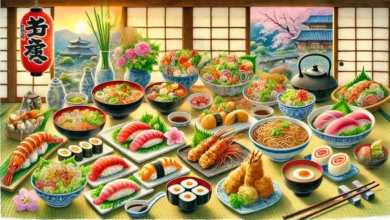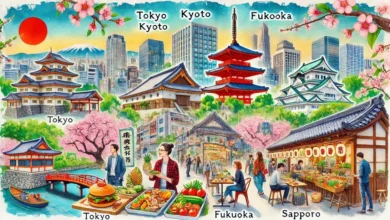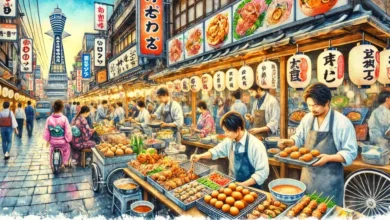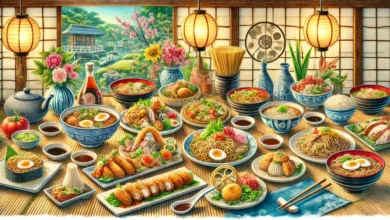Soy sauce made from crickets in Aichi Prefecture
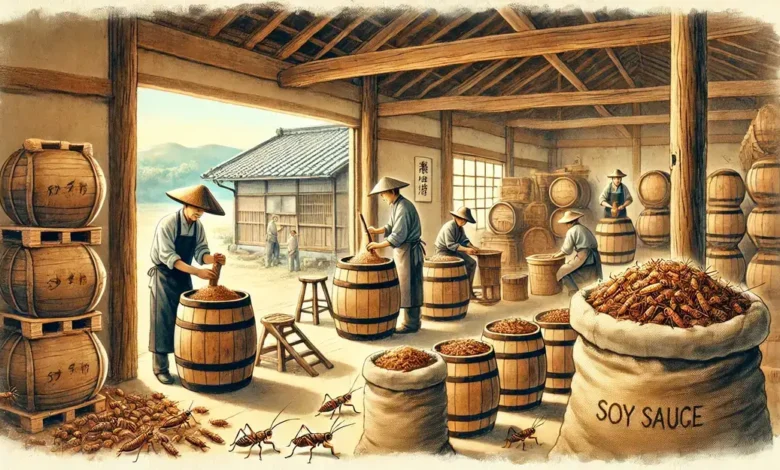
Aichi Prefecture is recognized for its unique and complex cuisine called Nagoya Meshi, in which Hatcho Miso, a crimson sauce prepared solely from soybeans, is considered the “heart” of Nagoya Meshi. Recently, a long-time miso maker in Aichi Prefecture was impressed with the idea of manufacturing miso and soy sauce (醤油 – Shoyu) from insects, broadening the cuisine here, specifically Soy Sauce made from crickets.
100 ml of this soy sauce requires 480 crickets and costs 10–20 times more than soy sauce made from soybeans.

The creation process of soy sauce created from crickets
Noda Miso Shoten is a miso company in Aichi Prefecture, Japan. It was started in 1928 and is known for making miso in old-fashioned wooden tanks. Each year, they make up to 2,000 tons of miso. But in 2017, they started trying to make miso from crickets and grasshoppers.
This idea came from a student in a miso-making class taught by Noda Yoshinari, who is the fourth president of the company and is 36 years old. Six years ago, Noda started teaching how to make miso. One student asked if it was possible to make miso from bugs. Noda, who loves to travel and has eaten many bugs in other countries, knew that bugs are full of protein, just like soybeans, which are used to make a type of miso called Hatcho Miso. Eating bugs is seen as a way to solve food shortages in many parts of the world. So, in 2017, he started trying to make miso from crickets and grasshoppers.

In 2019, Noda offered miso from insects at an event for young entrepreneurs. There, he met the people of the Antcicada restaurant in the Chuo neighborhood of Tokyo, which is famed for its cricket ramen. Previously, this restaurant also explored generating soy sauce from crickets, so they asked to join with Noda in researching and producing a new sort of soy sauce.

In 2019, Noda showed off his bug miso at an event for young business people. There, he met folks from a restaurant called Antcicada in Tokyo’s Chuo area, which is famous for its cricket ramen. This restaurant had tried making soy sauce from crickets before, so they asked to work with Noda to research and make a new kind of soy sauce.
After studying and testing, they started planning to sell cricket soy sauce in January 2020. By September 2020, they were ready to introduce the first batch of this new product to customers. They called it “コオロギ醤油 – Koorogi Shoyu”, which means “Cricket Soy Sauce”.
“Using soybeans as Miso helped me learn that soybeans are a terrific ingredient that balances protein and fat content,” Noda Yoshinari remarked. “However, now that I’ve employed crickets to produce Miso and Shoyu, I’m free to experiment with other substances besides soybeans.”

Koorogi Shoyu items made from crickets are salty and aromatic. The crickets utilized have moderate, delicate flavors and are given by Gurirasu Co., Ltd. in Tokushima Prefecture and Taiyo Green Energy Co., Ltd. in Saitama Prefecture. Crickets are ground into powder and treated with Koji yeast and salt in oak barrels at Noda Miso Shoten, utilizing almost no soybeans in the production process to make a special line of soy sauce. According to Noda, they taste pretty similar to Thai fish sauce and other fish sauces.
Yuta Shinohara, the 26-year-old manager of restaurant Antcicada, speaks more about using Koorogi Shoyu: “This soy sauce will go well with sashimi, white fish, and other foods without sacrificing taste.” light, delicate soy sauce. “It also works well with grilled rice balls or dango cakes drizzled with soy sauce.”
After a successful introduction in 2020, Koorogi Shoyu soy sauce continues to be manufactured in the second batch, with roughly 400 bottles this year. You may find out more about the product at the Antcicada website.

